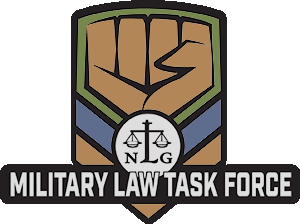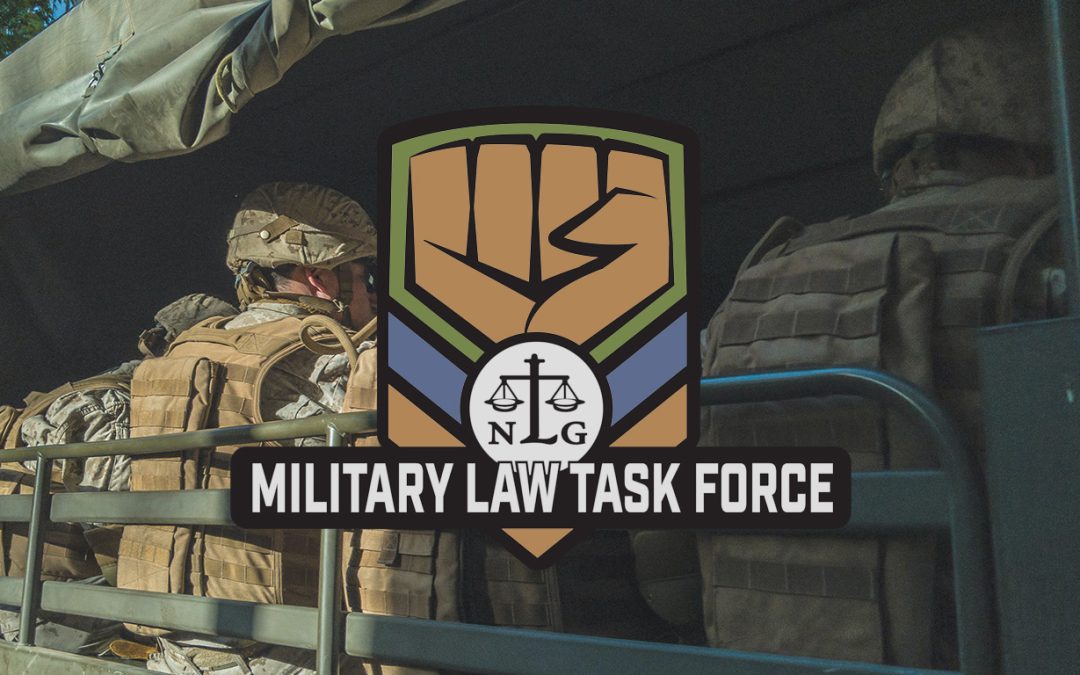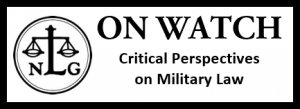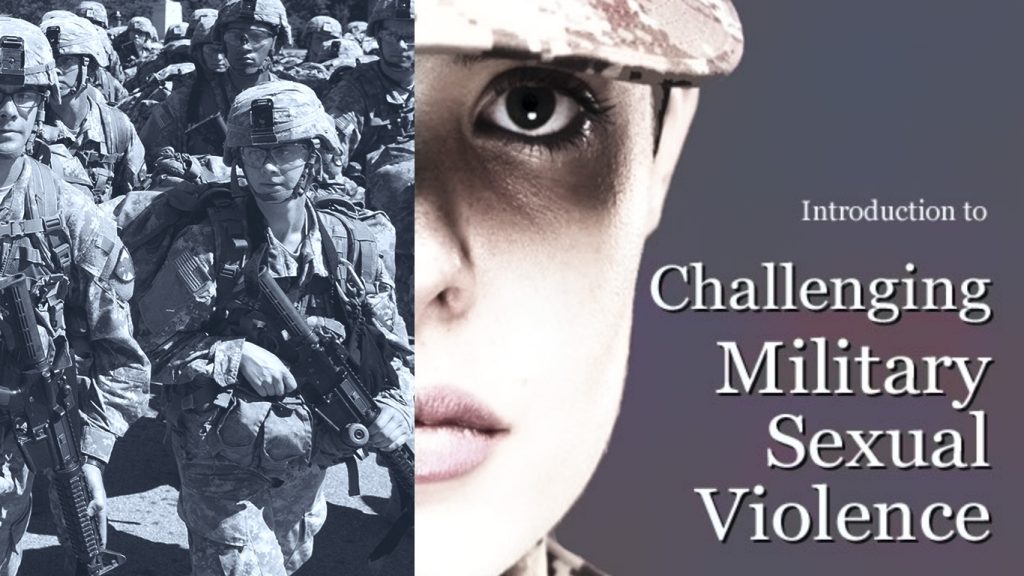By Kathleen Gilberd |
On February 8, 2018, the Undersecretary of Defense for Personnel and Readiness issued a new overarching DOD policy prohibiting harassment. DoD Instruction 1020.03, “Harassment Prevention and Response in the Armed Forces,” establishes DoD policy governing all types of harassment, including general harassment, “discriminatory” harassment (based on race, color, religion, sex, etc.), sexual harassment, bullying, hazing, retaliation and reprisals, most of which have been covered by separate policies in the past. To this writer’s knowledge, the Instruction marks the first time that the general concept of harassment has been addressed fully in DoD regulations. The Instruction specifically cancels two prior DoD memos on prevention of sexual harassment but leaves intact other policies such as the 2015 DoD policy memorandum on bullying and hazing (see On Watch, Summer, 2017, for a discussion of DoD and service policies on those issues). The policy will be useful to servicemembers and their advocates in challenging this pervasive problem.
Types of harassment covered
The new policy gives a general definition of harassment:
3.1 Harassment. Behavior that is unwelcome or offensive to a reasonable person, whether oral, written, or physical, that creates an intimidating, hostile, or offensive environment. Harassment can occur through electronic communications, including social media, other forms of communication, and in person. Harassment may include offensive jokes, epithets, ridicule or mockery, insults or put-downs, displays of offensive objects or imagery, stereotyping, intimidating acts, veiled threats of violence, threatening or provoking remarks, racial or other slurs, derogatory remarks about a person’s accent, or displays of racially offensive symbols. Activities or action undertaken for a proper military or governmental purpose, such as combat survival training, are not considered harassment.
The Instruction follows this with descriptions of specific types of harassment including:
Section 3.2: Discriminatory Harassment,
“ [a] form of harassment that is unwelcome conduct based on race, color, religion, sex (including gender identity), national origin, or sexual orientation.”
Section 3.3: Sexual Harassment. The definition here parallels that set out in DoD Directive 1350.2 (the Dept of Def Military Equal Opportunity (MEO) Program):
a. Sexual harassment is
Conduct that:
Involves unwelcome sexual advances, requests for sexual favors, and deliberate or repeated offensive comments or gestures of a sexual nature when:
Submission to such conduct is made either explicitly or implicitly a term or condition of a person’s job, pay, or career;
Submission to or rejection of such conduct by a person is used as a basis for career or employment decisions affecting the person; or
Such conduct has the purpose or effect of unreasonably interfering with an individual’s work performance or creates an intimidating, hostile, or offensive environment; [….]
The Instruction then adds at subsection (b):
b. [and the conduct] Is so severe or persuasive that a reasonable person would perceive, and the victim does perceive, the environment as hostile or offensive.
The definition also prohibits use or condonation of sexual behavior by a supervisor or other superior to control or influence a member’s career, pay or job, and any deliberate or repeated unwelcome comments or gestures of a sexual nature by any military member or civilian DoD employee.
While the EO Directive used the term “working environment,” it pointed out that for military personnel this could encompass the broader, 24-hour-a-day environment. The word “working” has been eliminated in the new policy’s definition.
Section 3.4: Bullying. This section generally uses the definition of bullying from the 2015 DoD policy memorandum on hazing and bullying:
A form of harassment that includes acts of aggression by Service members or DoD civilian employees, with a nexus to military service, with the intent of harming a Service member either physically or psychologically, without a proper military or other governmental purpose. Bullying may involve the singling out of an individual from his or her coworkers, or unit, for ridicule because he or she is considered different or weak. It often involves an imbalance of power between the aggressor and the victim. Bullying can be conducted through the use of electronic devices or communications, and by other means including social media, as well as in person.
But the Instruction goes further in describing bullying. Here, and in the following description of hazing, for example, the policy now includes not only physical harm or threats of such harm, but a range of specific behaviors including “intimidating, teasing, or taunting,” “berating” where the purpose is to humiliate or belittle, playing abusive or malicious tricks, “subjecting another person to excessive or abusive use of water,” degrading or damaging a person’s property or reputation, “branding, handcuffing, duct taping, tattooing, shaving, greasing, or painting another person,” etc.
3.4.a explains that a reasonable person standard is to be used to evaluate bullying, making no mention of the actual impact on the victim. Subsection c notes that actual or implied consent from the victim does not negate responsibility for bullying.
The policy makes it clear that “properly directed command or organizational activities that serve a proper military or other governmental purpose, or the requisite training activities required to prepare for such activities” do not constitute bullying.
3.5: Hazing. Here, the definition differs a little from that set out in the 2015 policy memo, covering:
[…] conduct through which Service members or DoD employees, without a proper military or other governmental purpose but with a nexus to military Service, physically or psychologically injures or creates a risk of physical or psychological injury to Service members for the purpose of: initiation into, admission into, affiliation with, change in status or position within, or a condition for continued membership in any military or DoD civilian organization. Hazing can be conducted through the use of electronic devices or communications, and by other means including social media, as well as in person.
This section also includes specific examples, such as initiation or congratulatory acts involving striking or threatening to strike another member, pressing any object into another’s skin (“pinning” or “tacking on” insignia or other objects), and other acts such as those listed under bullying.
Here, too, a reasonable person standard is used, with no reference to actual harm or fear of harm by the victim. Implied or actual consent to the conduct does not excuse the harassment. Properly directed command activities with a proper military purpose or military training activities are excluded, specifically including administrative corrective measures, extra military instruction and command-authorized physical training.
3.6 Retaliation. This includes “illegal, impermissible, or hostile actions taken by a Service member’s chain of command, peers, or coworkers as a result of making or being suspected of making a protected communication” as defined in DoD 7050.06, Military Whistleblower Protection. In its current iteration, that Directive covers a wide range of communications, including, for example, reports of sexual assault or harassment, and any reporting of harassment should be protected. Retaliatory behaviors are listed in the Instruction, including reprisals, “ostracism, maltreatment, and criminal acts for a retaliatory purpose in connection with an alleged sex-related offense or sexual harassment; or for performance of duties concerning an alleged sex-related offense or sexual harassment.” This section notes that further types of retaliation are found in the DoD Retaliation Prevention and Response Strategy Implementation Plan, issued in January 2017.
3.7 Reprisals. This form of retaliation includes “taking or threatening to take an unfavorable personnel action, or withholding or threatening to withhold a favorable personnel action, for making, preparing to make, or being perceived as making or preparing to make a protected communication” pursuant to the Military Whistleblower Protection Act.
While there may be forms of harassment not covered by this policy, it is sufficiently broad and detailed that it will offer support for members challenging oppressive acts which were not treated as harassment in the past. Harassment in the form of derogatory or offensive language, for example, has long been ignored in military settings, but can be challenged under the new policy.
Process for submitting complaints
The policy is not very specific about the mechanisms to be used in submitting harassment complaints. The DoD Military Equal Opportunity program bears primary responsibility for ensuring that the services develop prevention and response programs, and the EO system is listed as one of the places to which complaints may be made, so that DoD may view it as a primary office for complaints. But the new policy indicates that complaints can also be made to commanders, supervisors, Inspectors General, or “staff designated by the Military Service to receive complaints.” Until the services implement regulations specifying such staff, no lead office is specified, and members will have a choice about where to submit complaints.
Prior service policies are notably unclear about complaint mechanisms for hazing and bullying, but it may be that regulations implementing the new Instruction will assign officials to receive complaints. If not, the EO program may have significant new responsibilities for harassment complaints that are not discriminatory against protected classes. For the first time, the Instruction also makes provision for anonymous complaints, presumably to be made to any of the offices capable of receiving other complaints.
The policy distinguishes informal from formal complaints. The former may be written or oral (current EO policy envisions only oral complaints) and may be presented to anyone “in a position of authority” inside or outside of the member’s organization. The Instruction states that these should be submitted at the lowest possible level, in keeping with sexual harassment and EO policies that encourage resolution at a low level within the chain of command. Fortunately, members are not required to use informal complaints or, in doing so, to start with their immediate superiors. Formal complaints are only those submitted in writing to the officials designated to take harassment complaints by the service. An exception exists when a commanding officer or person in charge of the organization decides that an informal complaint warrants investigation.
Processing harassment complaints
Informal complaint procedures are left without an explanation of process, and it appears that no actual investigation is required, though these complaints must be reported to service headquarters and, from there, to DoD, as is the case with formal complaints.
Formal complaints which do not involve sexual assault or sexual harassment are to be forwarded to the next superior officer with general court-martial convening authority (GCM CA) in the chain of command. To the extent practicable, the complaint and a “detailed description” of facts should be sent to that officer within five duty days of receipt of the complaint. The command (presumably not the GCM CA, but the immediate command) is to initiate an investigation within five duty days of receipt of the complaint, notifying the complainant that it has begun, and also provide the complainant with information about military and civilian support resources, the investigative process, and any appeal rights. Once the investigation is completed, the complainant must be advised whether his or her complaint was found to be substantiated or unsubstantiated and informed of the right to a (probably redacted) copy of the final report.
Where possible, investigations are to be completed within 30 days of initiation. A final report, including a description of any action taken, is to be submitted to the GCM CA within 36 days of initiation. If that cannot be done, progress reports must be submitted when the investigation begins and every 14 days thereafter.
Formal sexual harassment complaints use a different timetable and, possibly, a different mechanism, as the Instruction is not clear on the latter. Current DoD and service regs handle these complaints through the EO system, though investigation and resolution are left to the command. Under the new Instruction, the complaint could be submitted to any of the officials mentioned above. The complaint should be forwarded to the GCM CA within 72 hours of receipt, if practicable, and an investigation must also begin within that time. Complainants must receive information regarding the investigation, support resources and any appeal rights, as well as final notification of the substantiation or nonsubstantiation of the complaint, as with other harassment complaints.
Sexual harassment investigations should, to the extent practicable, be completed within 14 days of commencement, and a final report provided to the GCM CA within 20 days of commencement. Where this cannot be done, an initial progress report and 14-day progress reports are required.
Unlike other harassment complaints, sexual harassment investigation reports must be reviewed for legal sufficiency.
Sexual assault complaints are to be referred to Sexual Assault Response Coordinators and handled under DoD and the service regulations on sexual assault. (These provisions are discussed in detail in MLTF’s self-help guide, Challenging Military Sexual Violence.)
Special provision is made for the handling of anonymous complaints. If the complaint contains enough information to initiate an investigation, that will be done under the provisions of the Instruction. If the command determines that it does not contain sufficient information, the command will document the complaint in a Memorandum of Record, maintain it on file, and report it as would be done with other complaints.
Where any formal harassment complaints are substantiated, commands are to take appropriate disciplinary or administrative action against the harasser, though the Instruction does not offer specific information about appropriate responses. Commands are also to decide whether the harassment warrants a command “climate assessment” or additional training on harassment.
Where complaints are found to be unsubstantiated or only partially substantiated, complainants may be able to appeal their “administrative findings” under the provisions of DoD 1350.2 (the EO Directive).
Conclusion
Harassment has long been a significant problem for military personnel, motivated often by racism, sexual objectification, and other forms of discrimination. The new Instruction is valuable in bringing attention to the issues involved, and perhaps in combining them under a single policy. Much depends on how detailed and strong the implementing service regulations will be, and on whether commands are prepared to treat very common forms of harassment, such as verbal abuse, seriously. Attorneys and counselors can play an important role in ensuring that harassed servicemembers are made aware of the policy and their complaint options, and that commands are held to the requirements of the Instruction. It is worth noting that the complaint procedures described here do not eliminate other traditional remedies for instances of harassment, such as complaints under Article 138 of the UCMJ or Congressional intervention. This writer suggests that their use along with formal complaints under the new policy may make both more effective.
The sexual harassment and sexual assault complaint procedures discussed in MLTF’s self-help guide, and the complaint rights for bullying and hazing reviewed in the Summer, 2017, On Watch, also provide information about pursuing complaints and holding commands accountable. As new service regulations are published, On Watch will report on them as well. In the meantime, we encourage readers to track implementation of the policy and share with us their observations and case approaches.
___
Kathleen Gilberd is a legal worker in San Diego and serves as the Executive Director of the MLTF.



